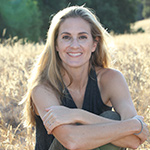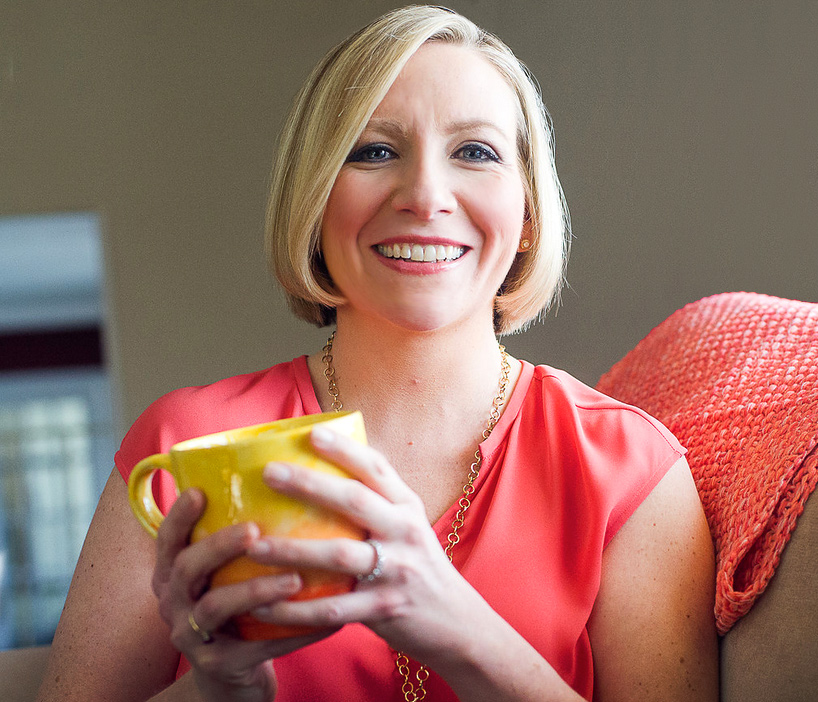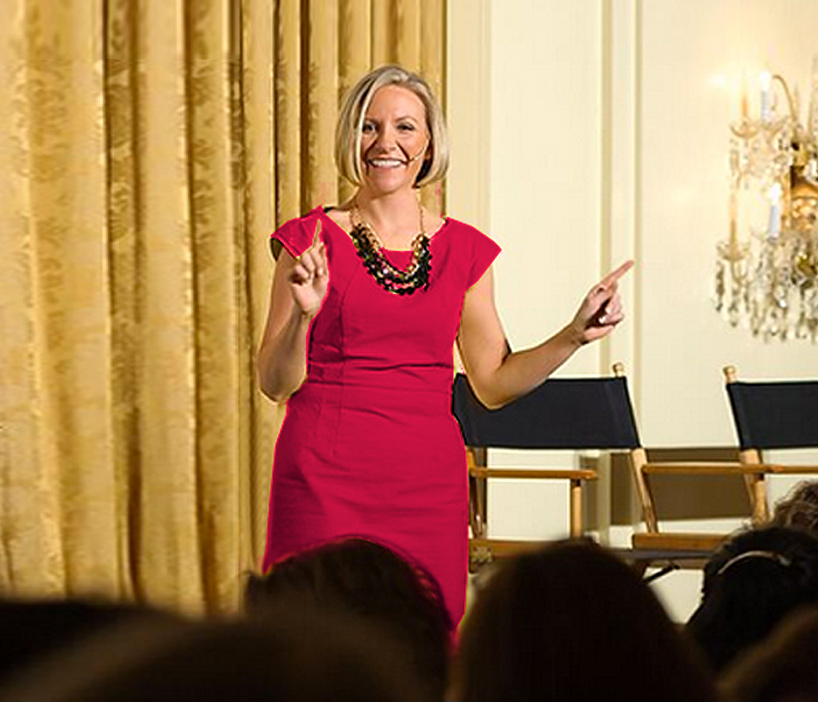Suzanne Kingsbury is here! She’s an award-winning best-selling author and the Founder of Gateless Writing Inc., a worldwide literary arts organization based on ancient Zen and cutting-edge creative brain science that brings writers, creative and business leaders to their highest level of Innovation and productivity.
What is the Gateless Writing process?
Suzanne explains what it isn’t first and how she came to understand the brain science behind Gateless Writing. Hear how she went from being a successful writer to being a blocked writer when she tried the conventional method of writer education.
We learn better (and write better) when we come from a positive place. Criticism can lead to blocks and crippling doubt. We’ve been told what isn’t working as a way to learn instead of what IS working.
The Gateless Writing method is focusing on what is right. What’s good? What are you doing well? That helps you focus on what’s going well and allows you to grow from there.
Gateless has also helped people improve all aspects of their lives. When we focus on what’s good, what’s working well, everything that is good begins to come along with you and what’s not good falls away.
Hear how Suzanne describes how the Gateless concept came to her. It’s so inspiring. Realizing there are no gates, there’s nothing stopping us from taking next steps.
People are craving change but get stuck because they can’t see the big picture. They don’t know what to do to make the desired change. In our culture we look backwards for assurances which isn’t helpful. The pragmatist acknowledges what is required to make a change and strategizes to make it possible.
Look toward the pieces of your life that bring you joy. Start there. Identify a bridge that helps you get from where you are now to where you want to be. Suzanne shares a great example of this.
Hear how to learn the methodology to become Gateless. This is something that anyone can do if there is a desire to stop self-criticizing.
Start with a small step.
What’s working?
Where do I need resources?
Who can I ask for help?
Connect with Suzanne
FB: https://www.facebook.com/suzanne.d.kingsbury
Connect with Suzanne on Instagram
SUBSCRIBE TO THE SPACE FOR MAGIC PODCAST ON YOUR FAVORITE PODCAST PLATFORM
Apple | Spotify | Stitcher | iHeart | Amazon
It’s grown, you know, in the past 22 years that I’ve been on my own. It’s grown into a methodology that you can use outside of the writing space. You can use it incorporate. You can use it in academia, you can use it in therapeutic care. And you get to find out what you’re doing well, in order that it grows, because that’s the reticular activating system in the brain that helps you focus first on what’s going well and then grows what’s going well and keeps building on it. And then the brain will ask for the resources it needs because it’s not afraid to be vulnerable.
Welcome to the space for magic podcast where people who are led by their hearts come to learn the secrets to receiving all the gifts the universe has for us. I’m your host Patty Lennon. I’m an ex type a corporate banker turned intuitive coach, using a blend of common sense brain science and just a dash of magic. I’m here to help you create abundance in every area of your life, and business. Welcome.
Welcome to this episode of the space for magic podcast. I’m your host Patty Lennon and today I have a guest with me Suzanne Kingsbury. Now for me to describe who Suzanne is, I have to talk about her in the context we met. But overall, Suzanne is an award winning Best Selling Author and the founder of gateless writing Inc, a worldwide literary organization based on ancient Zen, and cutting edge creative brain science that brings writers creative and business leaders to their highest level of innovation and productivity. And I will start by saying for those of you listening, if you don’t identify as a creative, or writer or business leader watch out, because by the end of this episode, I bet you that you could embrace one of those titles. And what I want to tell you about when I met Suzanne is we met through Terri Trespicio who was a guest here at one of her events. And Suzanne is as close as I’ve seen to you know, I’ve heard about Earth Angels. Humans, that chose to incarnate for the very first time, but they were actually angels, and they are very angelic in their presence. This does not mean she’s impragmatic that she doesn’t have a huge amount of data and science behind what she teaches. It’s just that when she’s in the room, there is just a sparkliness to the energy that I associate with angels. So with that welcome, Suzanne.
Thank you, Patty. And it’s funny because I always think of you as having very angelic energy. And I always think of how huge angels are right? When you really think about it. Like in the biblical sense. They’re gigantic. They’re terrifying in their size, even if they’re really kind and tender and graceful and what they offer. So, you know, it’s not the little tiny angel on your shoulder. It’s like a huge, huge presence. And I feel that so much when I’m with you, Patti. Oh, thank
you, thank you. I think if I was an angel, I would be like, the angel that was always getting into trouble. It’s not going to feel nice to you. But I think if I raised myself up to angels
will be really fun. Fl y everywhere and sort of, yeah, interrupt people’s lives, interrupt the bad love affairs. Don’t I’m gonna fly you in a different direction.
Probably have like chocolate down my robes. So I’m gonna jump right into like, the most important question on my heart and why I so want you here. And then there’s just lots we can talk about the can you talk about the gateless method? This is to me. You know, it’s funny when Terry was on, I think she might have talked about it, but I’ve heard her speak about it in lots of different spaces when she learned it. And at the heart of it is, you know, focusing on the positive, I’m gonna let you describe it. And when I first saw you teach it because you taught it at Terry’s event, my immediate reaction was the same as Terry’s, which is, there’s no way this is going to work. So and yet it does, and it is the most powerful approach I’ve ever seen the product, the end product, the end writing product that comes out of you and your process is by far, just so deep and so delicious. So talk about what that is. What is the gateless process?
I think the only way to talk about gateless is to talk first on the inverse, which is the cult of criticism that we’ve become accustomed to in our culture. So, the cult of criticism is really a brainwashing that has been thoroughly systemic within the society. It’s in education. It’s an, you know, everywhere in academics, in the government, in sports and corporations, where we believe that in order to, quote unquote, get better, we need to be criticized. Right? I mean, haven’t you heard that, like, if you can take criticism, then you can, you know, you’re going to be able to improve. And, you know, yes, start maybe start with the good things, but then always go into what’s not working. So what happened with me is that I never had an English class in college, but I was always writing and I wound up just kind of on my own writing these two best selling books that went on to be optioned for film. And, you know, they had just big success in the industry. But I had not had any formal education in it. And I went to a master’s program. And I was so excited to learn the craft and be around other writers. And you know, I had all this joyfulness around the process and sort of my success, you know, was so surprising and exciting. What happened was, I entered a cult of criticism, where we all sat around the writing table and criticized each other’s work, then nobody had any skill as a writer, everybody was sort of learning it. So even me, you know, I didn’t have the vernacular to teach anyone else the craft, I had somehow done it by Intuit and having read all my life and having good stories inside me. But I had no business telling anyone else, you know, what wasn’t working in their work. And I got blocked for the first time in my life. Both of us are science geeks, right? Patti? Were like research geeks. So of course, I went on like a research rampage, like Why Why am I blocked what’s happening in my brain, and what was happening simultaneously, to me being in the master’s program, were all these brain science studies, neuroscientific studies around creativity and innovation. So Stanford, Harvard, National Institute of Health, like, they were all doing these very fascinating neuroscientific studies on the brain around how we create. And what they found, is that when we’re criticized at all, so say, someone just says to you, hmm, to get your hair cut, and it’s not mean, but there’s a little edge there, you’re gonna go into fight or flight. That’s what happens when we get criticized. And when we’re in fight or flight even a little bit, our imaginative centers shut down the centers that are affiliated with long term memory, these are in the brain, with innovation with a feeling of euphoric can do, you know, like, I can do this, it all shuts down. So essentially, what we were doing in that program was shutting down the centers of our brain that could create and take creative risks, do really domain changing work on the page. And we were fighting against ourselves or our own brains by sitting around criticizing each other. And you know, by and by kind of understood that in every single strata of society, we’re doing this to each other. Now, Patty, that doesn’t mean that we don’t need resources, skill, craft, all those things. But there’s an overlay of criticism that comes along with teaching skill, that if you can separate those two things, you’re going to get the skill and the agency without that terrible feeling that you have to fight in order to get anything need. Does that make sense?
Absolutely. I love this, this was such a good place to start, keep going.
So I think when it started, I was just really concentrated on writing and myself. You know, it was very personal. It was like, How can I get back to that euphoric, joyful, blissful state, where I am able to create on the page and make stories and sell those stories. And, you know, all those feelings that Hi had been in relationship with when it came to creating those books had gone away and had been replaced by feelings of self doubt, a feeling of being less than not enough, not being able to get started wondering where to begin feeling like a failure or looking for sort of a safe life where I didn’t have to take any more risks. And this was all because of the culture of criticism that’s alive and well in academia. It was no one’s fault. It’s just what we’ve been taught. We’ve been taught that since we were little, and we get the red X on the paper, you didn’t do this right? You didn’t do this? Well, you have to, and so many people listening, Paddy will think but how is the kid gonna learn? Unless they know what they’re not doing? Well,
yes, that was exactly my thought when I first was learning your process in that like, very small workshop setting. I was like, there is no way that this is going to produce anything.
Yeah, and that’s so normal. Because from when we’re tiny, tiny tots, don’t do that. Don’t eat like that. Those aren’t good manners. Stop it, you know, and then you go into school, and you’re getting these red x’s. And that’s not how you do a math problem. And why are you Why is your handwriting like this? So what gateless does, is it goes into those places. So for taking the child as the example it might be easier, as adults, you know, we have all our adult cognition going on that believes the cultural criticism, of course, you know, we’ve been trained in it. But if you think about a little child, and you said to that child, do you see how you did this math problem, right? Up until this point, tell me what you did to get to this point, because all of this is great. And that child starts to explain to you what they did in order to get to that place where things started going awry. And then you give them the tools and the skills, they need to continue in that vein with the rest of the problem, rather than the big red X, go back and do it again, or this is a D minus, you’re not good at math, they don’t have the skills somewhere they missed out on those skills, and they just need them. They don’t need the red X, they don’t need someone to tell them this isn’t right. What they need are tools to do it right. And every single time they do something well, so they might have a messy paper, right? Their handwriting is just not there, if they’re learning handwriting, but there’s probably one letter, or even one word where things are really lining up. So you show them hey, this is great, right here, do you see how you wrote me out and everything lined up on that line. So you’re really moving towards focusing on what’s going well, what’s happening that’s working, and then giving them the skills and the resources in order to build it and build it. And as adults, we are afraid to try new things. Because every time we tried new things as a child or growing up or even in young adulthood into adulthood, we were told what wasn’t working? And so why why would we go out and try things that are new, or that have anything that’s like, sort of not familiar inside of it? Like, why would we do that we wouldn’t, it would be too scary, we’re gonna get criticized, we’re gonna go and fight or flight and we’re going to freeze and then we’re going to feel like failures and have a lot of self doubt. So instead, he walked into a gateless space. And obviously, now it’s grown. You know, in the past 22 years that I’ve been, on my own, it’s grown into a methodology that you can use outside of the writing space, you can use it incorporate, you can use it in academia, you can use it in therapeutic care. And you get to find out what you’re doing well, in order that it grows, because that’s the reticular activating system in the brain that helps you focus first on what’s going well, and then grows, what’s going well and keeps building on it. And then the brain will ask for the resources it needs, because it’s not afraid to be vulnerable. Ah,
so good. So talk to me about when you initially put this together, as you know, a system or actually how did you originally introduce this work to other people.
I started in my living room. I was living in a loft above the Connecticut River in this little arts town. And I remember saying to my, now my ex husband, my husband at the time, if no one shows up, I’ll just write by myself. But essentially, I called it a writing salon. And people came they did show up. And what we did was I said we’re going to go into meditative state, because this is what brain science also found is that we’re most creative, when we drop the conditioning of the cognitive mind. And the ways to do that are through things like meditation, massage, yoga, eating something that feels comforting and delicious. Like there’s all theset ways that you can get the brain into this more open, less conditioned state. So I said to them, we’re gonna go we’re gonna go into this meditation. I’m gonna go around the room and do you know sort of a little bit of Reiki which I was trained in and massage, and then I’m going to lead you in a prompt and you’re going to write, don’t worry, when you read aloud, we’re only going to look for what we love what has energy on the page where you’re using Craft Tools, there will be no criticism. So people came, they drink wine, they eat chocolate, they got, you know, massage, or they went into these meditative states, they did the prompt, and they came out paddy with the most powerful writing and some of them had never written before. They were adults, but it was just wasn’t their thing. You know, but they weren’t sort of wanted the community and they knew me and they thought, like, Okay, well, I’m just gonna have fun and lounge around, you know, in this pretty living room for the night, you know, with these fun people. But they started to create work that was electrifyingly good. And some of them, you know, were syndicated. They started, you know, local newspaper columns. And there were syndicated. Some of them got book deals other you know, and then what I saw was that their lives started to change. So things within their lives that they loved became bigger, and things that weren’t working started to just fall away. So relationships that weren’t going well fell away. And they went into relationships that were supportive and loving. People moved, you know, into houses that they always wanted to move in, because they had been stuck before in old domiciles that were too sort of crowded, and their incomes started to change, I mean, things that dreams really, that they have began to come true. And the reason for this was that what they were doing on the page with gateless, looking for what they loved and other people’s work, and in their own work, it doesn’t have boundaries. So you go home, and you’re just automatically looking at your children differently or husband differently, or house. And because everything that’s not working falls away, then you’re moving into this very free landscape where everything that is good begins to sort of come along, and everything that isn’t just wow, that’s funny, I’m no longer doing that habit, or I’m no longer really in that friend group that was so critical of me, or you know what I mean, like things just began to change for them. And that’s when I really knew this is something.
And then what was the growth of the gateless method, like for you from when you started that?
Well, I hadn’t named it, you know, I knew that it was something I knew I was doing something that was out customizing people, it wasn’t my intention, I really just wanted to get a group together, to write and to experiment with a different way of creating together and giving feedback. And then people became very addicted to it. It’s very addicting, but a safe kind of lovely addiction that feeds you. And they want to do retreats, right. So we started to run away together for four days to these beautiful places, and holed up in these houses and have a chef and a massage therapist, and write all weekend and laugh. And I began to see that a network was being built of people who were gateless with each other, they were supporting each other. gateless is a 15th century Zen word, the symbol is the end. So in Japanese, which is the open ended circle, and it essentially means the artist when all of conditioning falls away, and they’re one with their creative force. So gateless kind of came, it was like channeled almost, I was doing a retreat on the Gulf of Mexico. And all the sudden, I just began to say the word and everybody knew that’s what they were experiencing, we needed a word to describe this feeling because there is no word to describe how it feels to be in this space. And that is what it was. It was like, there are gates, you think there are gates, but there really are no gates, it’s we’ve been brainwashed to believe that. And when you’re in this space, it’s gateless you all a sudden see all those gates are transparent, they just fall away. And you realize, I am actually so much more powerful, joyful, able than I ever thought I was. And so it kind of built from that there was a I realized that was a methodology. And there were steps to the methodology. And so I began doing teacher training where people were trained in the methodology, and then it was really the teachers, the gateless teachers who went out into their communities and began working with the Ojibwe with prisoners with, you know, veterans with corporate with nonprofits and, and gateless sort of grew in that way. You know, now it’s sort of Worldwide there are 120 And teachers working worldwide, people wanted in the academy, you know, gateless Academy where they could learn to write. And so we did a post grad Academy, and that has 10 months where people build their books. And then that became a whole thing where we have faculty coming in and you know, lots of alumni who are doing really interesting work and are also in some ways trained, you know, to think this way and see this way. I love this.
And I want to go back to what you said, or like in the journey part to the place where you were just bringing people together to write like, it was just something you wanted to do. Yes, yes. And I wanted to, sorry, go ahead. Selfish. Yes. I love that I really wanted to highlight that because, you know, between the fact that, you know, the great resignation happened last year, right, all these people are like, forget this, this is just not worth it, whatever this was, and then, so many more people that I know, would love to resign from relationships from household duties from like, you know, lots of things. People are craving change in their life. And I so often see that people get stuck, needing to see what the big picture is, number one, and number two, editing themselves when there isn’t some other example of what they’re doing being a real thing out there in the world. And yet, the greatest innovations have come from people just stepping into what is calling them, especially when there’s nothing that looks like it.
I love what you’re saying. Because I think it’s exactly what happens when we live in a culture that is part of the criticism, because the critic, you know, to talk about the critic, it always wants a safe next step. So what it does is it looks backwards, who else has done something that I can step into so that it’s safe for me to go into a new landscape? So that’s why people you know, in the great resignation, they sometimes look laterally, like should I be a librarian now, like, at least that’s like safe, it has a container, it’s completely different one from what I did before, but I see it, it’s already in existence. So that’s part of critical thinking, the fear the self doubt, but there also is in there, and I think it’s worth mentioning this when people are entering new landscapes, taking risks, trying to move past what was before a pragmatist, and the critic and the pragmatist stand very close together. And it’s can be very difficult to discern, which is which, so the pragmatist is saying, Look, we do have to have maybe health insurance, you know, if we have kids, or we do have to make, you know, money in order to survive and all that the critic isn’t specific about those things. The pragmatist is the pragmatist makes the budget, figures out how much exactly we need each month, and then a tiny bit more for savings in order to meet our goals. It kind of maps things out in strategizes. So that’s very different, you know, leap and the net will appear, those kinds of old idioms don’t really actually work, because they activate the critic and the pragmatist has no place in there. So we do need the pragmatist, the pragmatist is looking at, you know, keeping us kind of safe in a very pragmatic way, the critic is yelling at you don’t do it, something horrible is gonna happen, you’re gonna have no money, nothing’s gonna be left out. All your friends are gonna leave you, you know, it’s yelling at you. It’s telling you these things are going to happen, but there’s nothing behind it. There’s no foundation, where if you can answer the critic with pragmatism, okay, well, is it true that I’m not going to be able to make ends meet? Let me see how much I actually need every month by looking at the bills. I mean, it takes time, you know what I mean, to make these big changes in our lives, and then moving towards the pieces of your life that give you energy that feel like I could do this forever. Like if I look at my own business, the place that I really get the most joy is still writing. So I try to fill my days now that doesn’t mean that I’m on pragmatic and only going to work on my book Look, for I’m only going to write the things that I love. No, I write all the time. And I find places where I can write, and I tell myself, look you’re writing. And that’s what’s important. That’s the goal that you wanted. So it’s not being too rigid about where we feel the quickening and where we feel the joy and start from there. But Patty, sometimes we just have to start with putting food on the table. Like I have a friend who’s wanting to move on from her job, you know, it’s very, she’s stuck. She’s really stuck in this place. It’s very patriarchal, you know, but she is a single mom. So she has to think about that. And I keep saying to her, you know, the bridge can be that you take some of these people that you’ve met at this job and start to do one on ones with landscape design, she, she works for a garden center, and she won’t do it. Because she’s like, I don’t want to work one on one I don’t want to do, but that’s going to get her out of that prison that she’s in in that job where she’s not getting treated, well, she has no money, her hours are not her own. So sometimes there are bridges that we can see that they may not be the end all be all, but at least to get us somewhere and still put food on our table and give us a little freedom and breathing space. Like that’s really what she’s good at. She knows how to work with the Earth, how to design, how to be with plants, how to identify what’s wrong, she’s wonderful with people. So she could think a little like that first and know that it’s just a place where she can bridge that gap that’s gateless, that’s really gateless. It’s like, look at what’s working. And then use your pragmatists to figure out how you can get out of what’s not working, and get a bridge going. So you can move into a new landscape.
I love how practical This is because I didn’t realize that piece of it inside of what you teach. And when you originally described the, the gateless symbol, and with the circle, but with the opening, I thought okay, but the circles there, right there is a container. So it’s just a container without the lid, it that’s in my mind, that’s what it was. It’s beautiful. And so what’s the container, but the container is allowing the pragmatic, the inner pragmatic, to guide you in the choices you make in exploring this,
exactly, the only thing you’re taking out is the criticism. So criticism is married in our culture to skills, resources, and tools. So I might look at your manuscript and say, I wonder if it would be helpful to you to have some skills and tools when it comes to dialogue. You don’t have to use them. But I find that it gives me agency to know what that craft is. And let’s look at that part in your manuscript that has the dialogue and see what it’s like to apply some of these craft tools. That is very, very different than saying to a writer, this dialogue is not working. It doesn’t sound like two people talking. I see nothing in it. That draws me in to the story. It’s stiff. Do you see the difference? It’s like, why do we have to surround it in the negative? Why can’t we give the writer agency or anyone agency, we don’t have to say to someone, look, you haven’t come up with any good ideas in a really a long time. And I don’t know if you’re gonna survive at this company, unless you start being more innovative, and more of a self starter? What if instead, you said to that person, I love how steady you are. And solid you are in this company, you hold a space for us that very few people can hold, which is that I can turn to you and always know that I’m going to get the same thing. And that gives me consistency. And I want you to be able to take risks. So here are some ways that I found that helped me take risks. Do these resonate with you? Is there anything else you might need to come forth with your ideas, because I bet you have amazing ideas. It’s so different, to say that to someone and give them agency and give them confidence, rather than just beating them down and saying I’m disappointed in you. And this is why it just closes people up. They can’t do it. They can’t then come forward with their strength and everyone is very strong in their own way.
So in what you just described though, and you tell me where I’m wrong, that needs to be authentic. That offering needs to be authentic, meaning if a manager learns the technique and uses it to manipulate someone into growing, I mean I’m being a bit exaggerated in my language. Ah, it’s not going to work meaning like, if what they really want to say is, you’re going to lose your job, if you don’t get your shit together, then your technique really isn’t going to work, I would imagine there’s some inner work people need to do, to truly like walk this gateless path. That’s right. So in that instance, the manager has not been gateless with the self first, because criticism is a direct result of self criticism. Hmm. And if they have not learned to be gateless with themselves and slough off the parts of themselves that have been conditioned to think with a negative bias, they won’t be able to be gay less.
So when we do the gateless training, which is you’re referring to Terry Krispies yo, who’s trained and the gateless method. That’s what we’re doing. We’re training ourselves to be gateless with the self, where am I strong? What am I doing? Well, what works in my life, in my creations, in my innovations, in my child rearing, what’s working? And then what happens when we build on that when we focus on it, and we build on it? And we ask for resources. It’s a huge part of the gateless training, how do we get resourced? In those places where we feel needy, neediness is not a problem. What’s a problem is that we are pragmatist hasn’t been activated to really identify those needs, what exactly are those things? What is the self doubt actually pointing to that you feel you do not have, and let’s find resources to meet them. And often, the people in that room have the resources. But because the criticism has gotten them into fight, flight or freeze, they haven’t even been able to access the pragmatist to identify the need, identify the resources that that need is asking for the tools and the skills, and then identify who they might be able to ask for those skills, resources and tools from and then what steps they can take towards getting those needs met? Because they’re in criticism around the needs, oh, my God, I don’t have what I need. This is horrible. How did I get myself in this situation? I’m never going to be able to make a change, I’m just going to have to stay where I am. That’s criticism, pragmatism is, okay, I’m feeling needy, I’m filling in self doubt, let’s really make a list of what’s going on here. What do I actually need, and then really figuring out how to fill those needs. So when the managers guiltlessly trained, they’re going to be able to look at that person and see very clearly what they’re doing well, because their brain has been trained to see that, where is this person strong? Where do they have energy. Now, it may be that they have toxicity within their team, that is something that they need to slough off. So say you have a team of five people, and one of them is toxic. If you’ve been gateless, with the self, first, you’re going to look around, and you’re going to be gateless with the team, meaning what’s working on my team, ha, these four are working, they might need some tools, skills and resources, but I can give them to this fifth person is not working. So I’m going to go with the good. I’m going to go with the strong, I’m going to go with what has energy. And I’m going to tell this person that it’s important now for them to find another place to be because we’re moving on. This is
I love that you said that because that was my next question. I’m like, Well, I’m like, I’m thinking back to all my years of managing and there’s times where I that would have been an empty, like a bottomless well, I would have been pouring my positivity into.
Absolutely, absolutely. And it happens, you know, in a gala skirt. You know, I remember one woman, I had to ask her to leave a salon because she was so destructive. You know, she was so divisive. She was sort of telling someone who had written about this horrible date rape experience, that it wasn’t date range, you know, wasn’t rape, and I just said right to her, this isn’t working. I’m sorry, you’re gonna have to pack up and leave. Because unless you’re willing to set that boundary, you don’t have a container. That’s gateless. You know, and this is not frivolous, right? But we have to do it all the time. You know, all the time. We have to look around what’s around us and see what’s working and be willing to say this isn’t working. You know, so you need to find another place to be because it’s not holding the container together. It’s very hard work.
Yes,
yes. And detailed and examined and patient, I would imagine.
Yes, it’s not leap and the net will appear. It’s not those throwaway idioms that have become tropes and Our culture that this is easy, but once it’s seen, it is so incredibly beautiful. I mean, life just takes on a multi dimensional feeling of, Wow, I can do this, I have so many options, I see that I am really limitless if I focus on what I love and what I’m good at and where I’m strong and make a list of what I need, and realize that I have those resources, if I can find sort of where to ask for them.
Oh, so delicious. Okay, so people are listening, and I’m sure there is a good percentage that are curious on how they can participate in a workshop or learn from you or learn from a teacher. So can you talk a little bit about the ways that people can learn this methodology work in context of writing?
Yeah, it’s such a good question. And I think one of the things that’s interesting about gateless is once you get a taste of it, you want more and more, you know, it’s feeding something that feels remembered again, in the self, you know, it’s like waking up a part of this film, but Oh, my God, I’ve been brainwashed, like, I want this. So what we’ve done is to train, you know, these over 100 teachers that are around the world, and you can take salons with them, you know, writing salons, but there are also people who go out into your community, they’re, you know, they can speak, they can do workshops in your community, that sort of thing. You can do the academy, you can do the teacher training, but it’s all at gateless writing.com. I mean, essentially, you can go there and sort of understand the methodology and understand what’s available at gateless writing.com. And we are always changing, right? There’s always new teachers coming out, you know, we have a teacher now working with college kids, and another one working at shifting curriculum. And so, you know, they’re sort of all over the place. They’re, you know, they’re like the elves or whatever. Yeah,
I love it. And if someone wants to start when they get to that website, like a little bite sized piece, is there a space? Like that’s very obvious on where to start? Is there a blog or something that that gives them just like a teeny tiny step forward
into you need to step forward? Yeah, I mean, essentially, moving around that space is helpful. But the best place to really understand the method in a pragmatic sort of experiential way is Becky Karishma. has read to me podcast, which is the official gateless podcast and read to me, you could just read to me.com. Or you can Becky Karish ke R Us Ah, she’s a gateless train teacher from New Hampshire, who does this beautiful podcast where she reads aloud to you just the small little pieces, and then she tells you why it’s beautiful. And what’s unique about it, and she, she like, does everything, children’s books, novels, memoirs, she has been really eclectic, and what she chooses, her voice is so meditative. I mean, really just listening to Becky, you feel at peace, it kind of drops you into that. And so place that we were talking about in that gateless place. So I would really, actually start there with our podcast. So it’s read to me, podcast, and sort of get a feel for it. And that’s free. And then you know, going around the website, you’ll find a lot of different information and understanding about the website. But that’s the way that sort of experience and methodology.
Now, I think I knew that Becky had a podcast like that. But I What’s so wild is I’ve known Becky for years. I don’t even know how we got connected. And just two days ago. What’s interesting for you listening is Susanna and I were supposed to record this a couple of days ago, and we had some tech issues, and we couldn’t we rescheduled and in between that time Suzanne, a memory has popped up on Facebook from years ago, of me and Becky having an exchange on Facebook. And I was just thinking, How did I meet her? And why does she keep coming up in my heart? This is like so fascinating.
Oh my gosh, that is so serendipitous. Well, she’s so wonderful, and I think I just looked her up while we’re talking. And it’s actually read to me literary arts.com Read to me literary arts.com faddish, she’s like really into the literary right, she’s brilliant on the page and as a gateless facilitator, and, but really I feel like she’s sneakily kind of Being gateless with you while you’re listening and pretending it’s sort of about the book, but, but it’s really sort of teaching you how to see through that lens. And it’s so soft, because we all a lot of us at least remember being read to as children. And that means in a sleepy time, and she reinvents that. So I recommend that podcast highly for podcast listeners who all are. And she also does, like, you know, other offerings that are associated with her.
I love that. So before you, I want to let you offer last words of wisdom to the listeners, but I want to just comment on something or highlight something. So Suzanne, for you, listening, as you can hear, has created this amazing body of work. She has all of these people out in the world, but also products that are the result of this core work. And yet, you’re so unassuming susiana. And so gracious in the way that you share even just, you know, we didn’t plan what, I didn’t even tell you, you could promote anything at the end. We didn’t even talk like that. But just for you to just share the spotlight with Becky, I think is just such a testament, not just to you as an individual, but to the work to really see what the work the gateless looks like embodied. Yes, yes. So thank you for that for just being that light. So I will turn it over to you what last words of wisdom, if any, would you like to share with the person listening right now?
Patti, I think a lot with the gateless work about MLK is beloved communities. And this idea that we’re living in a world right now that’s extremely divisive. It’s got these polarities, we are often activated by that divisiveness. And beloved communities are really about if one person is lifted up, we’re all lifted up. If one person is stamped down, we’re all subjugated. So I believe that if we start with the small, very easy step of where am I strong? What works in my life? Where do I have energy, and really look at the places that were, quote unquote, needy as being simply the pragmatist asking for resources? Where might I need resources? Why do I have the self doubt? What is it around, journaling it out making a list? And then figuring out what are my resources, I could have actually asked my neighbor about that he might have an idea, or, you know, I met that girl at that conference. And I could give her a call and just see what she does. And maybe she’d be willing to talk to me or I could email her. So really starting small, with this idea of the self being the beloved. And allowing that to come into your life, not all the time, just as much as you remember it, spending just five minutes or 10 minutes a day, in the beloved community with the self. And then when you can, if you can, turning that to the people in your life and asking, What do I love about them? Where are they strong? What has energy, and if they’re annoying you or you’re feeling on edge, just knowing that’s a place where they’re pragmatist is turned into their critic, I’m turning back to myself and asking what’s good about myself? What works? What do I need help with here? So kind of growing from there, I believe if we do that, personally, it’s gonna grow and we will really be able to shift community and shift
our world. Ah, amen. Amen.
Thank you. Thank you. Thank you so much for being here. Suzanne, you are just such a big bright light in this world.
Wow. You’re a sweetheart. Well, I was so happy to be able to do it. And I adore you. And yeah, and hi to everyone out there. It’s just wonderful to be here.
Thank you. Thank you and to you listening. Remember, well, tomorrow remembrances now? Find a way to see the good and make space for magic. Have a great week. Hey, thanks for listening. If you know someone who needs to hear this message, please share this episode with them. And if you’re feeling really generous, I’d love for you to leave us a review at your favorite podcast app. It helps us reach many more people and it fills my heart with so much joy. When I hear what you have to say about what I’ve shared. I’m cheering for your success. Have an amazing day. And don’t forget, always create space for magic.
This podcast is part of the sound advice FM network sound advice FM women’s voices amplified
Thanks for being here and reading my message. I want you to stay connected with me so that I can share all future communications with you.
Please enter your name and email below to join my community.
Success! Thank you for joining. You'll receive a confirmation in a while.
















